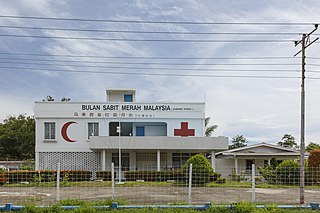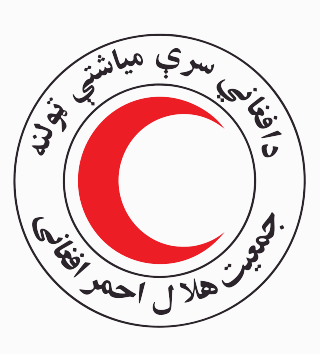
A humanitarian crisis is defined as a singular event or a series of events that are threatening in terms of health, safety or well-being of a community or large group of people. It may be an internal or external conflict and usually occurs throughout a large land area. Local, national and international responses are necessary in such events.

Emergency management or disaster management is the managerial function charged with creating the framework within which communities reduce vulnerability to hazards and cope with disasters. Emergency management, despite its name, does not actually focus on the management of emergencies, which can be understood as minor events with limited impacts and are managed through the day-to-day functions of a community. Instead, emergency management focuses on the management of disasters, which are events that produce more impacts than a community can handle on its own. The management of disasters tends to require some combination of activity from individuals and households, organizations, local, and/or higher levels of government. Although many different terminologies exist globally, the activities of emergency management can be generally categorized into preparedness, response, mitigation, and recovery, although other terms such as disaster risk reduction and prevention are also common. The outcome of emergency management is to prevent disasters and where this is not possible, to reduce their harmful impacts.

The Italian Red Cross is the Italian national Red Cross society. The Italian Red Cross was one of the original founding members of the International Committee of the Red Cross in 1919.

The Seville Agreement was an agreement drafted by the International Red Cross and Red Crescent Movement in 1997 to specify which Red Cross entity would take the lead role in different scenarios.

The 2006 Yogyakarta earthquake occurred at with a moment magnitude of 6.4 and a maximum MSK intensity of VIII (Damaging). Several factors led to a disproportionate amount of damage and number of casualties for the size of the shock, with more than 5,700 dead, tens of thousands injured, and financial losses of Rp 29.1 trillion. With limited effects to public infrastructure and lifelines, housing and private businesses bore the majority of damage, and the United States' National Geophysical Data Center classified the total damage from the event as extreme.

The Malaysian Red Crescent (MRC) is a voluntary humanitarian organization that seeks to promote humanitarian values, as well as provide service and public education in disaster management, as well as healthcare in the community. It is part of the International Red Cross and Red Crescent Movement.

The International Federation of Red Cross and Red Crescent Societies (IFRC) is a worldwide humanitarian aid organization that reaches 160 million people each year through its 191 member National Societies. It acts before, during and after disasters and health emergencies to meet the needs and improve the lives of vulnerable people. It does so independently and with impartiality as to nationality, race, gender, religious beliefs, class and political opinions.

The Qatar Red Crescent Society, the Qatari branch of the Red Crescent Society, was established in 1978. In 1981, it gained international recognition from the International Committee of the Red Cross in Geneva and joined the International Federation of Red Cross and Red Crescent Societies (IFRC). It is also a member of the Secretariat of Arab Red Crescent Societies in Jeddah. It became the first philanthropic organization in Qatar to establish a women's branch in 1982.
The Sudanese Red Crescent (SRC) is the biggest and most decentralized and widespread humanitarian organization operating in Sudan. The society developed out of the Sudan branch of the British Red Cross Society and was established in 1956. Upon Sudan's independence in March 1956 received official recognition as an independent National Society following the Sudanese Council of Ministers decree No. 869. The National Society covers nearly the entire country with 15 State branches and several sub-branches/units in the provinces/localities and administrative units, with a nationwide community-based network of 35,000 active volunteers and another 300,000 who can be deployed as need arises. It has well-established working relations with public authorities at federal, state and local levels, and good partnership and collaboration with Movement partners and UN specialized agencies and national and international NGOs working in Sudan.

The Afghan Red Crescent Society(ARCS; Pashto: د افغاني سرې میاشتې ټولنې; Persian: جمعیت هلال احمر افغانی) is the Afghan affiliate of the International Federation of Red Cross and Red Crescent Societies. The Society has existed for over 70 years although with limited structure due to the prevailing conditions which have affected the country at large for over 20 years. The current president is Matiul Haq Khalis and deputy president is Nooruddin Turabi.
Robert James "Bob" McKerrow, a native of New Zealand, is a humanitarian, mountaineer, polar traveller, writer and poet. He currently works as Country Coordinator for the Swiss Red Cross in the Philippines working on the Typhoon Haiyan (Yolanda) operation. When the Indian Ocean tsunami struck on 26 December 2004, McKerrow worked in India, Sri Lanka, Maldives and Indonesia, coordinating Red Cross programmes for people affected by the tsunami for an eight-year period.

UN-SPIDER is a platform which facilitates the use of space-based technologies for disaster management and emergency response. It is a programme under the auspices of the United Nations Office for Outer Space Affairs (UNOOSA).

In late October 2010, Mount Merapi in border of Central Java and Special Region of Yogyakarta, Indonesia began an increasingly violent series of eruptions that continued into November. Seismic activity around the volcano increased from mid-September onwards, culminating in repeated outbursts of lava and volcanic ash. Large eruption columns formed, causing numerous pyroclastic flows down the heavily populated slopes of the volcano. The 2010 eruption of Merapi was the volcano's largest since 1872.
The Maldivian Red Crescent (MRC) is an independent, volunteer, non-profit, humanitarian organization established in the Maldives by virture of the Maldivian Red Crescent Act Law No: 7/2009
The 2013 Saravan earthquake occurred with a moment magnitude of 7.7 at 15:14 pm IRDT (UTC+4:30) on 16 April. The shock struck a mountainous area between the cities of Saravan and Khash in Sistan and Baluchestan Province, Iran, close to the border with Pakistan, with a duration of about 25 seconds. The earthquake occurred at an intermediate depth in the Arabian plate lithosphere, near the boundary between the subducting Arabian Plate and the overriding Eurasian Plate at a depth of about 80 km.
Asian ministerial conference for disaster risk reduction (AMCDRR) is an intergovernmental conference held to discuss disaster mitigation. Its inaugural meeting was held in Beijing, in August 2005, after the adoption of Hyogo Framework for Action (2005-2015). The conference has been held seven times in collaboration with the United Nations Office for Disaster Risk Reduction (UNISDR). The motive of such conference was to mitigate the disaster risks. After the Indian Ocean tsunami came in 2004, India was among the five countries that were very badly impacted and took prime initiative to endorse for creating new laws for disaster risk management.
Cyclone Preparedness Programme is a disaster management program of the Government and Bangladesh Red Crescent Society in Bangladesh and is located in Dhaka, Bangladesh. The program is under the management of the Ministry of Disaster Management and Relief.

The 2004 Alor earthquake occurred on the island of Alor at 21:26:41 UTC on 11 November. Alor is an island located in Indonesia, the largest island of the Alor Archipelago with almost 16,800 residents. The earthquake had a magnitude of 7.5, on the moment magnitude scale, and an epicenter on Alor at a depth of 10 km (6.2 mi). It was recorded on 301 stations. The epicenter of the earthquake was located 1,600 km (990 mi) east of the capital of Jakarta. Hundreds of homes and much infrastructure was damaged with 23 deaths and thousands of casualties.











